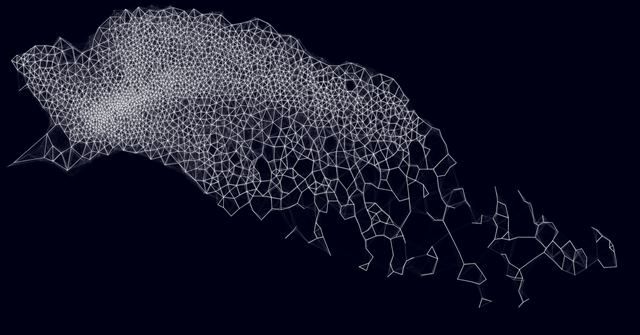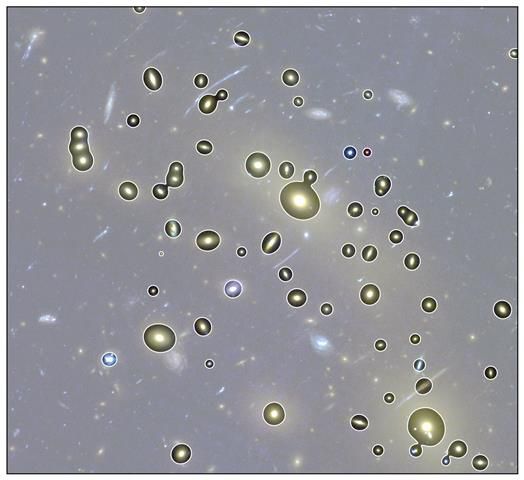Communications of the ACM
Analyzing Galaxy Images with Ai: Astronomers Teach a Machine How to 'see'

Hubble Space Telescope image of a cluster of galaxies. Bright yellow 'elliptical' galaxies are surrounded by numerous blue spiral and amorphous (star-forming) galaxies.
Credit: NASA / ESA / J. Geach / A. Hocking
A team of astronomers and computer scientists at the University of Hertfordshire have taught a machine to 'see' astronomical images. The technique, which uses a form of artificial intelligence called unsupervised machine learning, allows galaxies to be automatically classified at high speed, something previously done by thousands of human volunteers in projects like Galaxy Zoo.
Masters student Alex Hocking led the new work and describes it in "Teaching a Machine to See: Unsupervised Image Segmentation and Categorization Using Growing Neural Gas and Hierarchical Clustering," presented at the National Astronomy Meeting at Venue Cymru, Llandudno, Wales. The paper is co-authored by James E. Geach, Neil Davey, and Yi Sun.
The team has demonstrated their algorithm using data from the Hubble Space Telescope Frontier Fields: exquisite images of distant clusters of galaxies that contain several different types of galaxy.
"The important thing about our algorithm is that we have not told the machine what to look for in the images," Hocking says, "but instead taught it how to 'see.'"
His supervisor and fellow team member Geach adds: "A human looking at these images can intuitively pick out and instinctively classify different types of object without being given any additional information. We have taught a machine to do the same thing."
"Our aim is to deploy this tool on the next generation of giant imaging surveys where no human, or even group of humans, could closely inspect every piece of data," Geach says. "But this algorithm has a huge number of applications far beyond astronomy, and investigating these applications will be our next step."
The scientists are now looking for collaborators to make good use of the technique in applications like medicine, where it could help doctors to spot tumors, and in security, to find suspicious items in airport scans.
 |
Visualization of the neural network representing the "brain" of the machine learning algorithm. The intersections of lines represent a map of the input data. Nodes that are closer to each other represent similar features within the data.
Credit: J. Geach / A. Hocking

Image showing the MACS0416.1-2403 cluster, highlighting parts of the image that the algorithm has identified as "elliptical" galaxies.
Credit: NASA / ESA / J. Geach / A. Hocking
No entries found